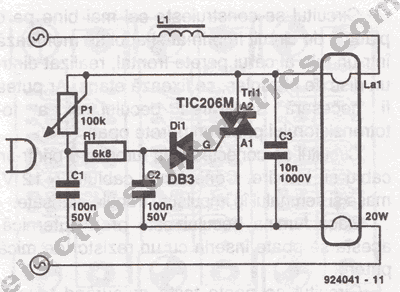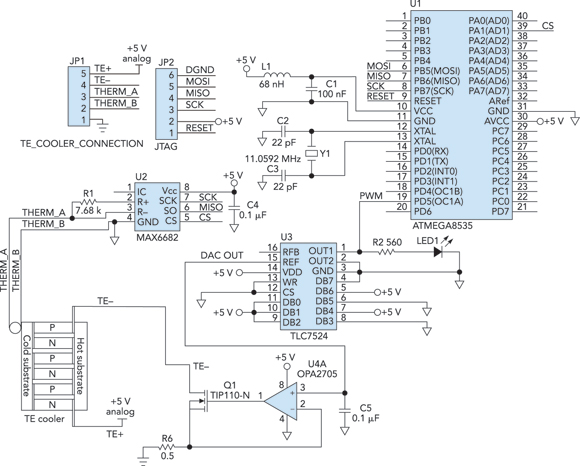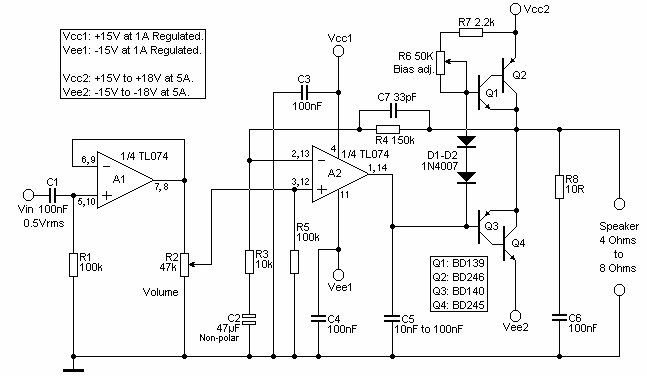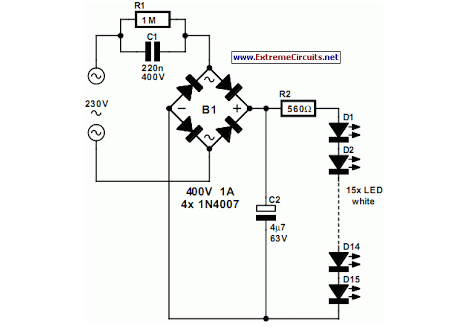
Light isolated solid state power relay circuits
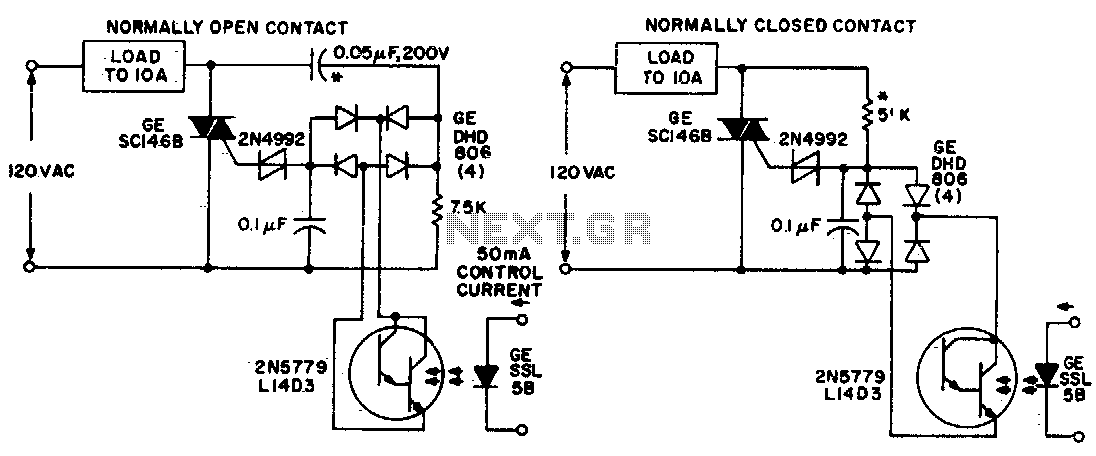
Both circuits utilize the GE SC146B, a 200 V, 10 A Triac for load current contacts. These triacs are activated by standard SBS (2N4992) trigger circuits, which are managed by a photo-Darlington configuration, functioning through the DA806 bridge as an AC photo switch. To enable relay operation at different line voltages, the asterisked (*) components must be adjusted to provide equivalent current. Ratings should be modified as necessary. Incandescent lamps can be substituted for light-emitting diodes if preferred.
The circuit design incorporates the GE SC146B Triac, which is capable of handling load currents up to 10 A and voltages of 200 V. This triac serves as the primary switching element, allowing for the control of AC loads. The triggering mechanism employs the SBS (2N4992) trigger circuits, which are essential for initiating the conduction of the triac. The photo-Darlington configuration acts as a light-sensitive switch, responding to variations in light intensity.
The DA806 bridge rectifier is integrated into the circuit to convert the AC input into a usable DC output for the photo-Darlington transistor. This configuration ensures that the triggering circuit operates efficiently, providing reliable activation of the triac when sufficient light is detected.
For applications requiring operation at various line voltages, specific components within the circuit, denoted by asterisks (*), must be recalibrated. This adjustment is crucial for maintaining consistent current levels across different voltage scenarios, ensuring that the performance of the circuit remains stable regardless of the input conditions.
Moreover, the flexibility of the circuit design allows for the use of incandescent lamps in place of light-emitting diodes. This substitution can be beneficial in applications where traditional lighting is preferred or where the characteristics of incandescent lamps are more suitable for the intended use.
Overall, the described circuit provides a robust solution for controlling AC loads through light-sensitive triggering, with provisions for adaptability in component ratings and load types.Both circuits use the GE. SC146B, 200 V, 10 A Triac as load current contacts. These triacs are triggered by normal SBS (2N4992) trigger circuits, which are controlled by the photo-Darlington, acting through the DA806 bridge as an ac photo switch. To operate the relays at other line voltages the asterisked (*) components are scaled to supply identical current
Ratings must be changed as required. Incandescent lamps may be used in place of the light emitting diodes, if desired.
The circuit design incorporates the GE SC146B Triac, which is capable of handling load currents up to 10 A and voltages of 200 V. This triac serves as the primary switching element, allowing for the control of AC loads. The triggering mechanism employs the SBS (2N4992) trigger circuits, which are essential for initiating the conduction of the triac. The photo-Darlington configuration acts as a light-sensitive switch, responding to variations in light intensity.
The DA806 bridge rectifier is integrated into the circuit to convert the AC input into a usable DC output for the photo-Darlington transistor. This configuration ensures that the triggering circuit operates efficiently, providing reliable activation of the triac when sufficient light is detected.
For applications requiring operation at various line voltages, specific components within the circuit, denoted by asterisks (*), must be recalibrated. This adjustment is crucial for maintaining consistent current levels across different voltage scenarios, ensuring that the performance of the circuit remains stable regardless of the input conditions.
Moreover, the flexibility of the circuit design allows for the use of incandescent lamps in place of light-emitting diodes. This substitution can be beneficial in applications where traditional lighting is preferred or where the characteristics of incandescent lamps are more suitable for the intended use.
Overall, the described circuit provides a robust solution for controlling AC loads through light-sensitive triggering, with provisions for adaptability in component ratings and load types.Both circuits use the GE. SC146B, 200 V, 10 A Triac as load current contacts. These triacs are triggered by normal SBS (2N4992) trigger circuits, which are controlled by the photo-Darlington, acting through the DA806 bridge as an ac photo switch. To operate the relays at other line voltages the asterisked (*) components are scaled to supply identical current
Ratings must be changed as required. Incandescent lamps may be used in place of the light emitting diodes, if desired.


